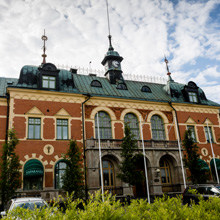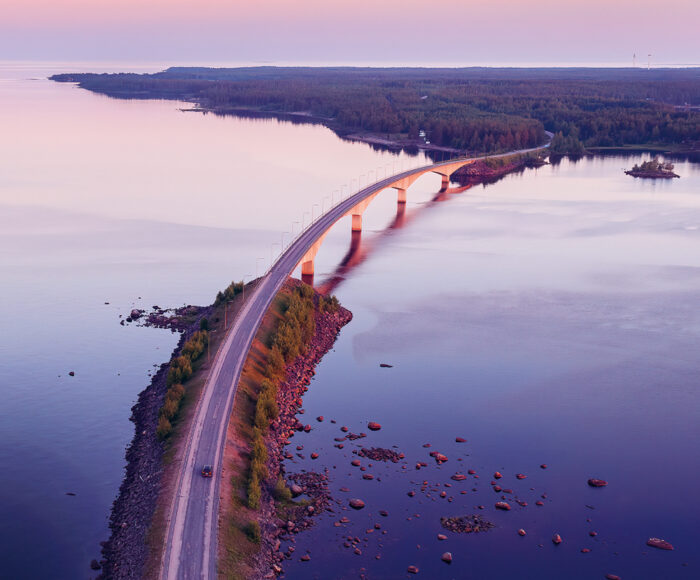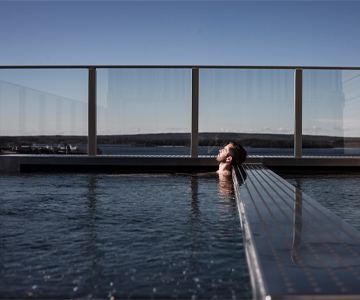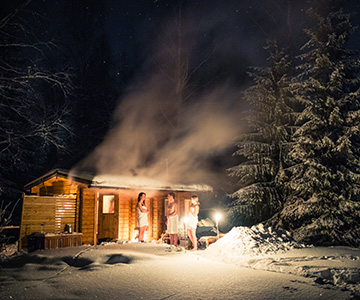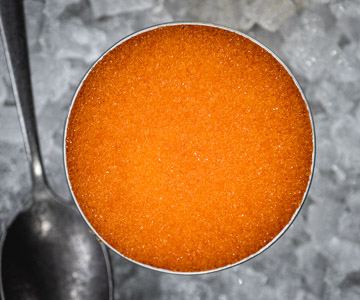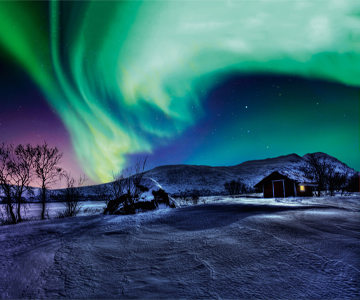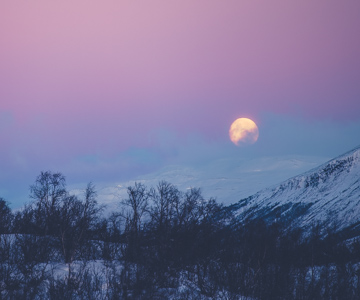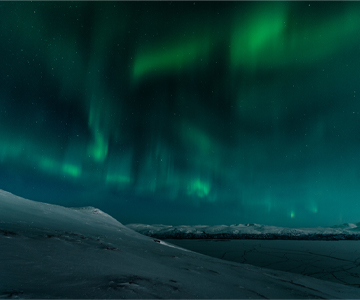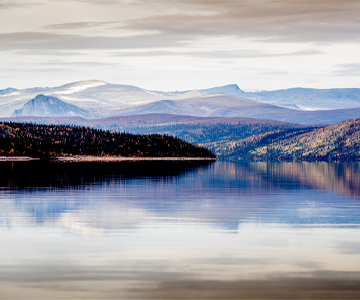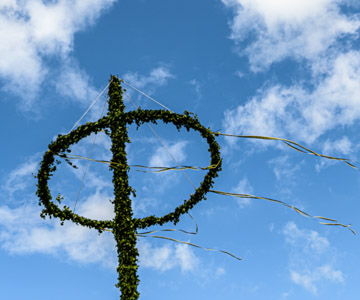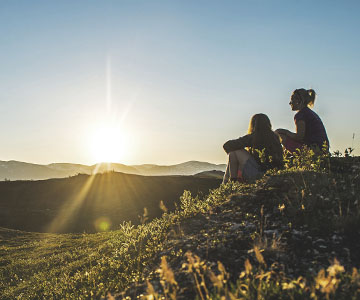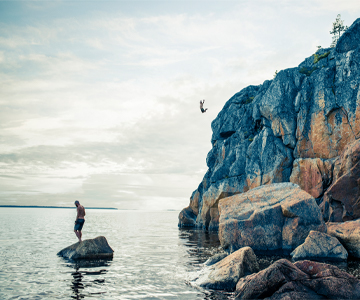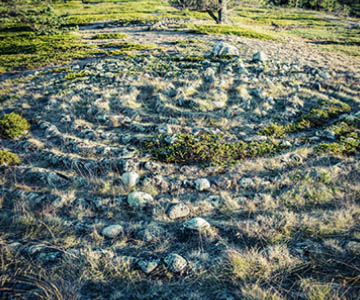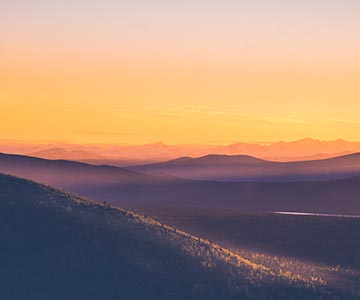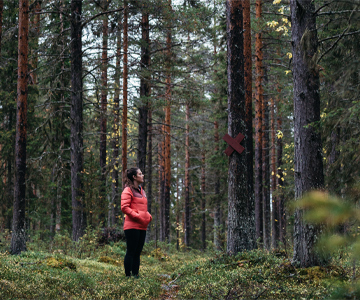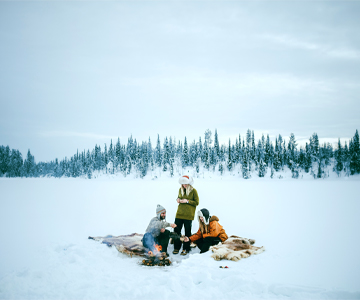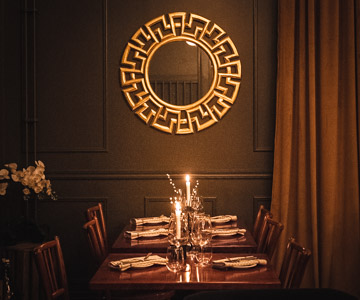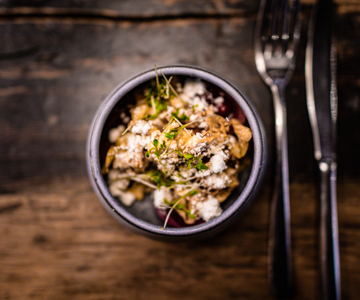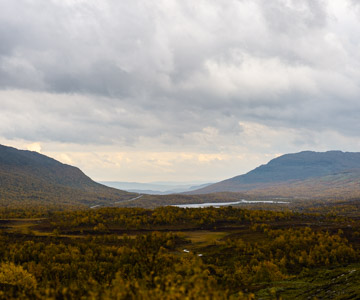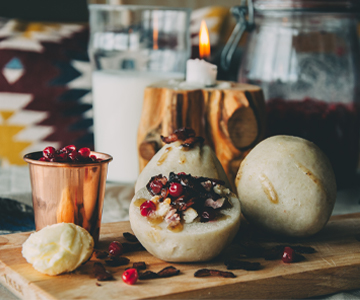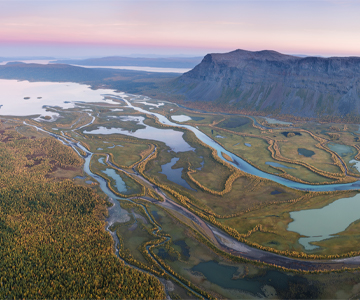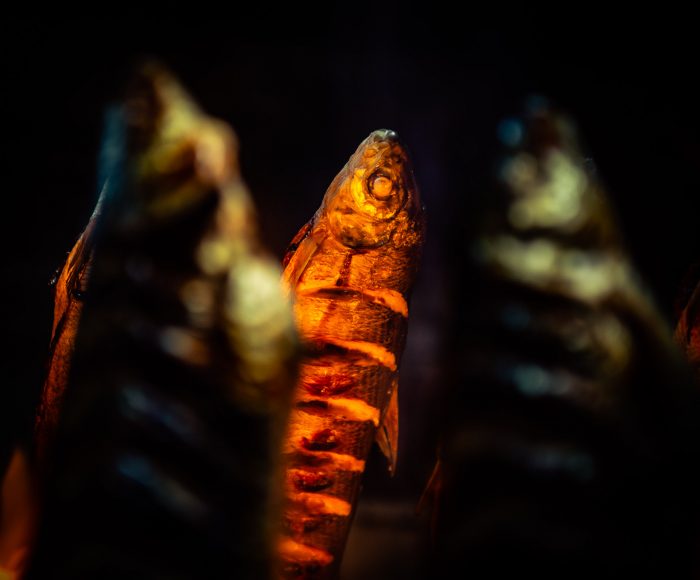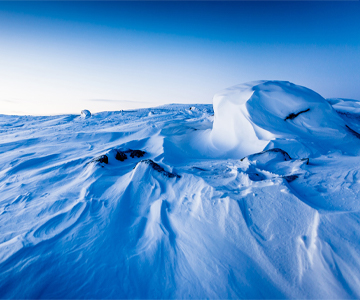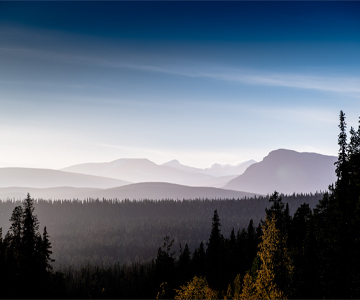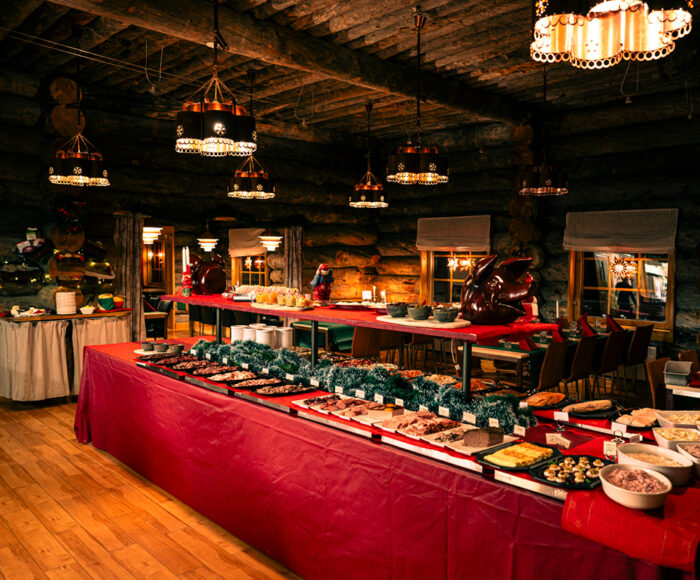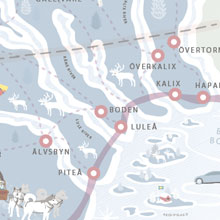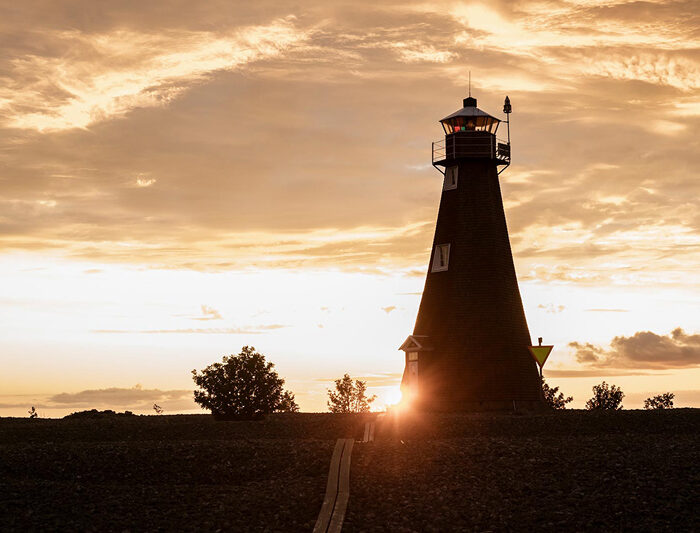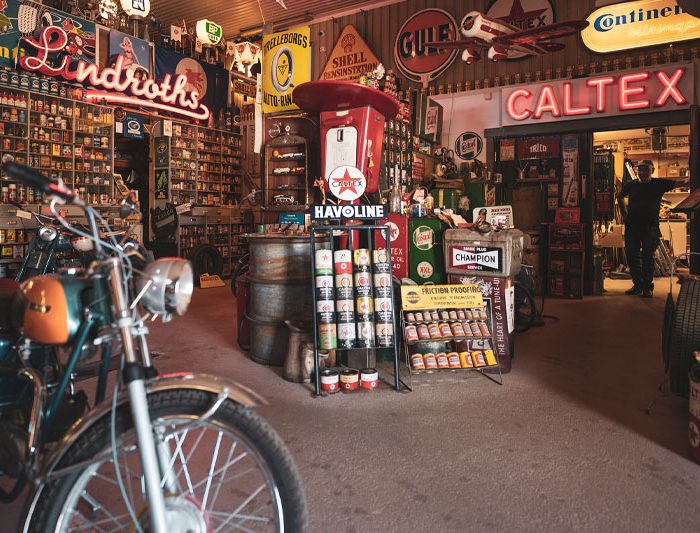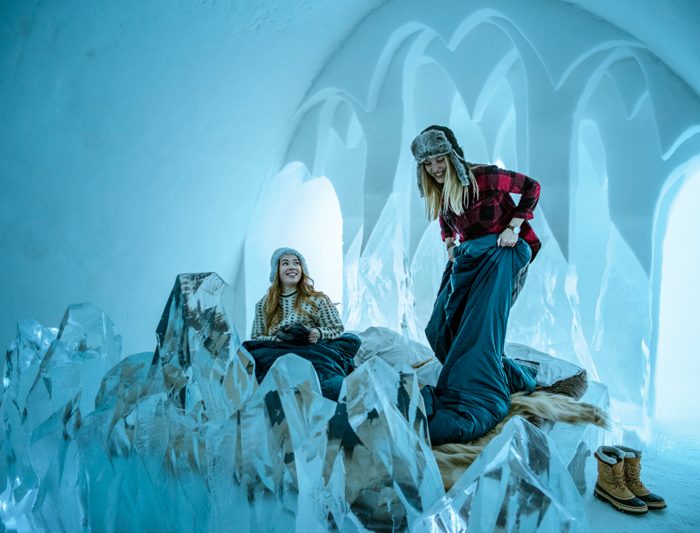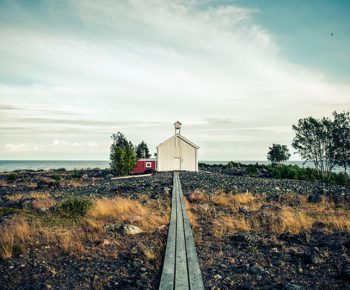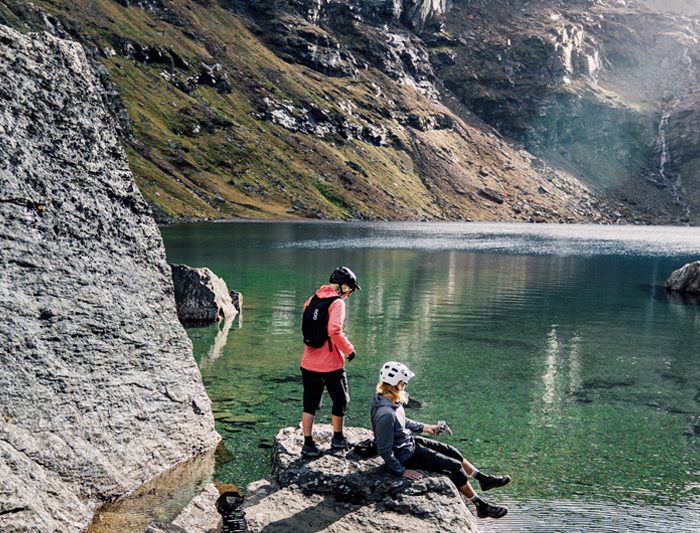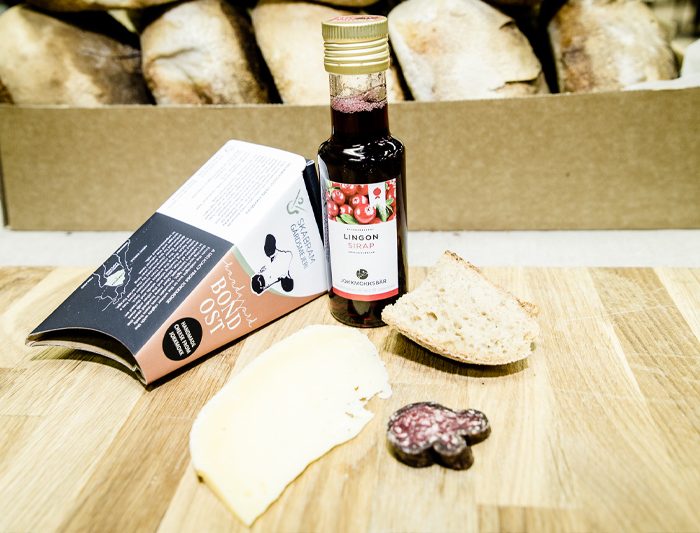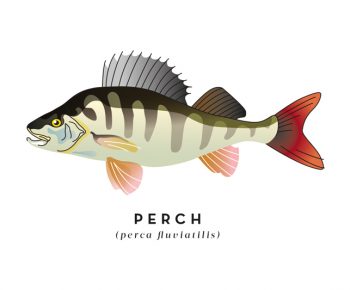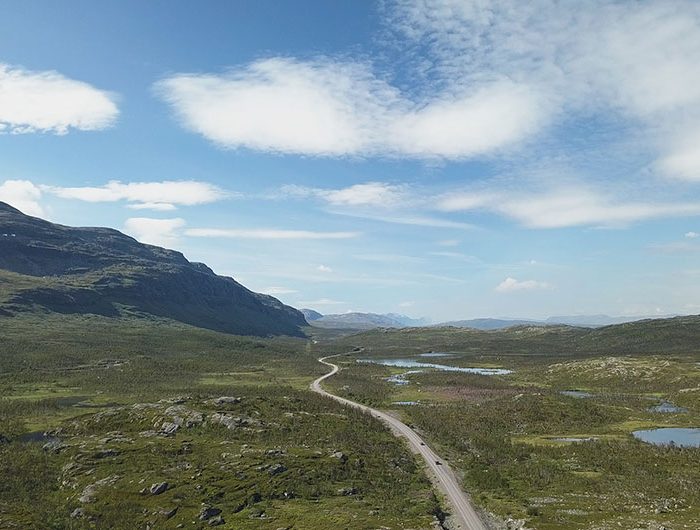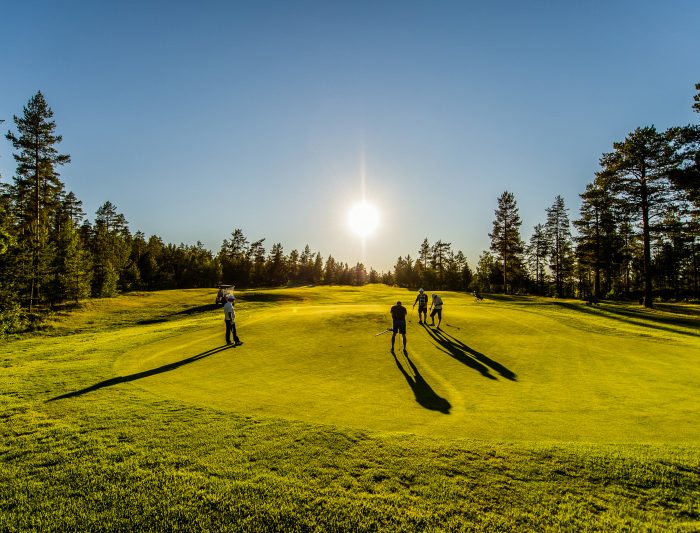On a warm and summery Saturday morning in August, you get off the train in Haparanda. You have 36 hours to do something exciting in a place you’ve never visited before. The only thing you’ve done beforehand is booked a hotel. But what to do, now that you’re here?
Afternoon: Lenin was here, then he went home to start a revolution. There’s a plaque in memory of Lenin on the wall of Haparanda’s impossibly grand railway station. Once upon a time this was the meeting point between East and West, between Tsarist Russia and what we now refer to as Western Europe. They say that around the time World War I broke out, at least a quarter of the town population consisted of spies and foreign agents. Together with profiteering goulash barons, they spent their time at the city hotel: Stadshotellet. That’s also where you’re heading.
Evening: In the evening you have dinner at KGB Kaféet Gulasch-Baronen at Stadshotellet. It’s warm, and you take a stroll through town. You pass the well-known trading house HM Hermanssons, a store museum that’s open when the flags are out. You also walk past the park and the statue created by Haparanda town in memory of the photographer Maria Amalia ‘Mia’ Green. Apart from her amazing photography she also came to influence society as a feminist and fighter against social injustice. On the copper bust in the park it says “Pioneer. Photographer. Humanist” – there are worse things to be remembered for.
Mia Green was also the initiator of the Invalidity Monument at Haparanda Graveyard, commemorating the patients who died on transports passing through town during the war. You move on from the graveyard and it’s late evening. Haparanda Church has been called the ugliest in Sweden. The building, an example of Brutalist architecture, is called ‘Clean House’ and was designed by Bengt Larsson. It’s not that difficult to work out the architect’s imagery: a dark exterior with a clean, white interior.
About HaparandaTornio
Haparanda and Tornio on either side of the Torne river, one in Sweden and one in Finland and in two different time zones. A historic marketplace where trade is still important, not least with the world’s northernmost IKEA and a shopping center located directly across the border. The locals live with one foot in each country and speak Swedish, Finnish and/or the minority language Meänkieli.
For more information, visit heartoflapland.com
Curious about what it’s like to live in HaparandaTornio?
Check out haparanda.se

Haparanda Sandskär
A perfect day trip when the sun is shining. It is of course worth bringing both a towel and sunscreen. In Norrbotten's youngest national park, there are kilometers of sandy beaches to relax on.
Early morning: The next morning you’re up at the crack of dawn. You tie your trainers and head out into the fresh summer morning. You walk along the so-called Health Trail, past IKEA – the town’s most well-known landmark these days – and then on towards the golf course. This golf course is famous because you play it in two countries, a bit like when you crossed the Finnish border over to Tornio this morning, on foot. To the people here, the border river has never been something that separates. Rather the opposite: it’s something that has always united. Once you’re back at the hotel it’s time for breakfast and some planning. What’s the rest of the day got in store?
Morning: There’s a tour boat from the harbour in Nikkala out to Haparanda Sandskär, which is the youngest national park in Norrbotten. It’s the perfect day trip, and since the sun is shining it’s also worth bringing a towel and some sunscreen. There are kilometre-long sandy beaches to relax on.
Afternoon: Back in town you drop your kit off at the hotel. Sit down, have something refreshing. The choices for the afternoon and evening are many. An obvious choice would be the IKEA-area and all the outlets, perhaps a walk to Tornio and a proper Finnish karaoke evening. Or you could take a taxi to the Kukkolaforsen rapids and the sauna museum. Yes, that’s right, there are no fewer than 13 different saunas there and one or several of them will be fired up this evening for sure. This is also where you find the Swedish Sauna Academy.
Evening: However, after a day in the sunshine you’re more interested in just taking it easy, so you go to Kukkola to enjoy a tasty dinner. Netting whitefish in Kukkola is something unique; it’s a fishing technique used here and in some parts of the Amazon. How could you possibly eat fresher whitefish than what’s caught in the hand nets here in the Torne River, and then served on the terrace of the restaurant next door? 70 metres, give or take, with a short detour to the smoke hut, between where it’s caught and where it’s plated. Actually, speaking of Academies: it was in fact the salmon fishing in the Torne River that once upon a time lay the foundation for the financial status of the Swedish Academy. Nowadays the salmon fishing here is world famous and the Torne River might be the best salmon river in the world.
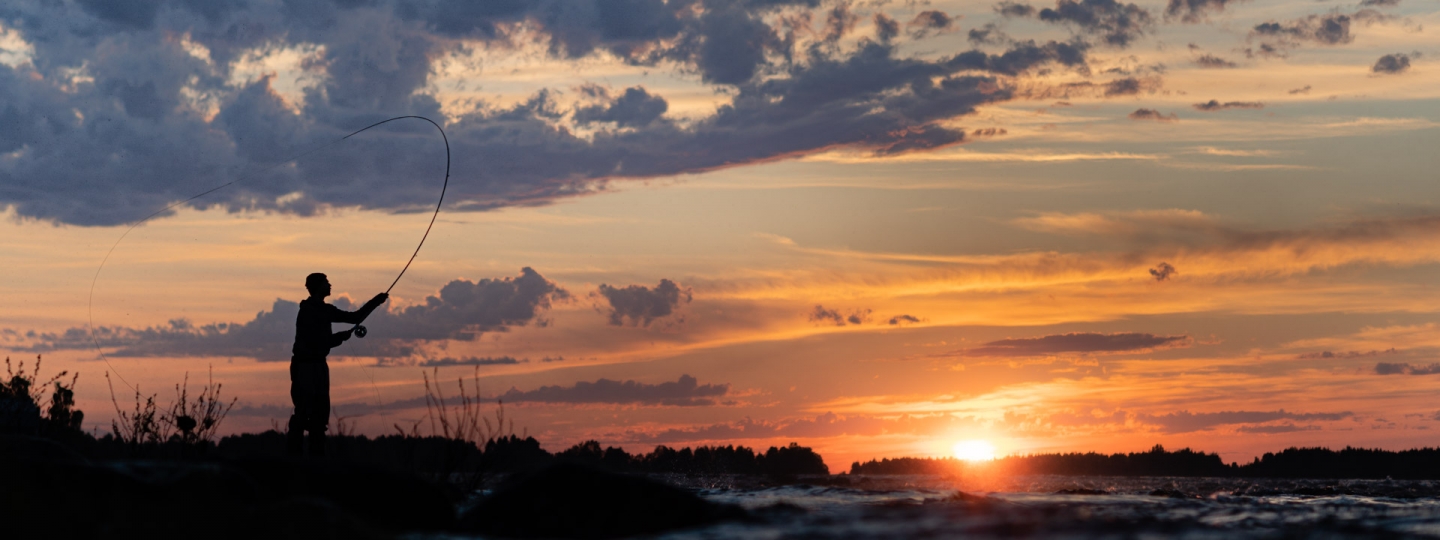
The Torne river
It was the salmon fishing in the Torneriver that once upon a time laid the foundation for the Swedish Academy's financial status. Today, the salmon fishing here is world famous and the Torne river is perhaps the world's best salmon river.
Packing up: In the morning you enjoy your breakfast in peace and quiet. Then you take a walk to stretch your legs. You head towards Cape East, Sweden’s easternmost spa and hotel. The sauna, with a sauna bench that can seat 150 persons and inspired by a Mayan temple, is just part of this very natural procedure. You enjoy a lunch at the hotel before you board the train again, heading south. You’re thinking perhaps you should return in winter. Do it all again, but under the northern lights rather than the midnight sun. Instead of golf and walks, perhaps dog sledding and ice breakers.
36 hours in Haparanda
On a hot summer Saturday morning in August, you get off the train in Haparanda. You have 36 hours to do something exciting, in a place you’ve never visited before.



















